![計算物理學導論(第2版) [An Introduction to Computational Physics(Second Edition)]](https://pic.tinynews.org/10914291/e1513ce6-1b24-4797-9b8b-ae476a1df223.jpg)

具體描述
內容簡介
教育沒有什麼驚天動地的大事,隻要把每件小事做好,就能享受到教育的幸福。作者張曼淩老師就是這樣一位一直在享受教育幸福的教師。她結閤自己的經曆,從班級管理、課堂教學、個彆學生的教育、個性修煉及業餘生活等角度人手,告訴各位教師,隻要在細節上多用心,培養起學生學習及管理班級的積極性,不僅可以高效率地完成工作,還可以充分享受休閑生活。不把工作帶迴傢其實就是這麼簡單!內頁插圖
精彩書評
小曼,一個必要的烏托邦。那是一個以詩做底子的小曼,那是一個以善良做血肉的小曼,那是一個以夢想做心靈的小曼,更是一個以執著做意誌的 小曼。
我在貪婪地品鑒著小曼,品鑒著她的文字,是因為一貫生活在憤怒和絕望中的鄭傑,可以通過品鑒而知道除瞭批判,還有一種建設性的教育生活。
那麼多熱愛教育的人們都在品鑒她和她的文字,是為瞭印證人心裏期盼已久的安寜和渴望。
細細品鑒,浮現在你眼前的,是那肅殺氣氛裏難得的一縷幽香。
——中國知名校長、人們眼中的“另類校長” 鄭傑
讀小曼這本《魅力女教師修煉記》,我再次堅信:一個教師,是否“優秀”不是重要的,關鍵的是,是否“幸福”。因為“優秀”與否是彆人的評價,“幸福”與否是自己的感覺。小曼享受著學生,享受著工作,享受著每一個平凡而充實的日子,她因此而幸福。
——著名特級教師、成都武侯實驗中學校長 李鎮西
精緻,源於細緻;精緻,始於精心,成於精彩!小曼老師和她的教育生活,浪漫而精心,細膩又精緻,智慧且精彩!
——翔宇教育集團總校長、新教育研究院院長 戶誌文
小曼用心詮釋瞭她對生活、對教育的熱愛與敬畏。她的文字很快樂,很細膩,也很熱情,讀著讓人安靜,讓人溫暖。新教育讓小曼在平凡的工作中做齣瞭不平凡的成績,這不僅是一位年輕女教師自我修煉的提升,更反映瞭一個教育人的自省。
——吉林市勞動模範 陳久文
目錄
preface to first editionpreface
acknowledgments
1 introduction
1.1 computation and science
1.2 the emergence of modem computers
1.3 computer algorithms and languages
exercises
2 approximation of a function
2.1 interpolation
2.2 least-squares approximation
2.3 the millikan experiment
2.4 spline approximation
2.5 random-number generators
exercises
3 numerical calculus
3.1 numerical differentiation
3.2 numerical integration
3.3 roots of an equation
3.4 extremes of a function
3.5 classical scattering
exercises
4 ordinary differential equations
4.1 initial-value problems
4.2 the euler and picard methods
4.3 predictor-corrector methods
4.4 the runge-kutta method
4.5 chaotic dynamics of a driven pendulum
4.6 boundary-value and eigenvalue problems
4.7 the shooting method
4.8 linear equations and the sturm-liouville problem
4.9 the one-dimensional schr6dinger equation
exercises
5 numerical methods for matrices
5.1 matrices in physics
5.2 basic matrix operations
5.3 linear equation systems
5.4 zeros and extremes of multivariable functions
5.5 eigenvalue problems
5.6 the faddeev-leverrier method
5.7 complex zeros of a polynomial
5.8 electronic structures of atoms
5.9 the lanczos algorithm and the many-body problem
5.10 random matrices
exercises
6 spectral analysis
6.1 fourier analysis and orthogonal functions
6.2 discrete fourier transform
6.3 fast fourier transform
6.4 power spectrum of a driven pendulum
6.5 fourier transform in higher dimensions
6.6 wavelet analysis
6.7 discrete wavelet transform
6.8 special functions
6.9 gaussian quadratures
exercises
7 partial differential equations
7.1 partial differential equations in physics
7.2 separation of variables
7.3 discretization of the equation
7.4 the matrix method for difference equations
7.5 the relaxation method
7.6 groundwater dynamics
7.7 initial-value problems
7.8 temperature field of a nuclear waste rod
exercises
8 molecular dynamics simulations
8.1 general behavior of a classical system
8.2 basic methods for many-body systems
8.3 the verlet algorithm
8.4 structure of atomic clusters
8.5 the gear predictor-corrector method
8.6 constant pressure, temperature, and bond length
8.7 structure and dynamics of real materials
8.8 ab initio molecular dynamics
exercises
9 modeling continuous systems
9.1 hydrodynamic equations
9.2 the basic finite element method
9.3 the ritz variational method
9.4 higher-dimensional systems
9.5 the finite element method for nonlinear equations
9.6 the particle-in-cell method
9.7 hydrodynamics and magnetohydrodynamics
9.8 the lattice boltzmann method
exercises
10 monte carlo simulations
10.1 sampling and integration
10.2 the metropolis algorithm
10.3 applications in statistical physics
10.4 critical slowing down and block algorithms
10.5 variational quantum monte carlo simulations
10.6 green's function monte carlo simulations
10.7 two-dimensional electron gas
10.8 path-integral monte carlo simulations
10.9 quantum lattice models
exercises
11 genetic algorithm and programming
11.1 basic elements of a genetic algorithm
11.2 the thomson problem
11.3 continuous genetic algorithm
11.4 other applications
11.5 genetic programming
exercises
12 numerical renormalization
12.1 the scaling concept
12.2 renormalization transform
12.3 critical phenomena: the ising model
12.4 renormalization with monte carlo simulation
12.5 crossover: the kondo problem
12.6 quantum lattice renormalization
12.7 density matrix renormalization
exercises
references
index
精彩書摘
The basic idea behind a genetic algorithm is to follow the biological processof evolution in selecting the path to reach an optimal configuration of a givencomplex system. For exampie, for an interacting many-body system, the equilib-rium is reached by moving the system to the configuration that is at the globalminimum on its potential energy surface. This is single-objective optimization,which can be described mathematically as searching for the global minimum ofa multivariable function. Multiobjective optimization involvesmore than one equation, for example, a search for the minima of gk Both types ofoptimization can involve some constraints.We limit ourselves to single-objective optimization here. For a detailed dis-cussion on multi-objective optimization using the genetic algorithm, see Deb.……
前言/序言
用戶評價
作為一個長期從事數值模擬研究的工程師,我一直都在尋找一本能夠兼顧理論深度和實踐指導的計算物理書籍。《計算物理學導論(第2版)》無疑滿足瞭我的需求。這本書的理論部分深入淺齣,對各種數值方法的推導和分析都非常到位,讓我能夠理解其背後的數學原理。同時,書中提供的代碼示例也非常實用,覆蓋瞭從基礎的數值積分、微分方程求解,到更高級的偏微分方程和綫性代數問題。作者對代碼的講解也非常細緻,不僅僅是給齣代碼,還詳細解釋瞭代碼的邏輯、實現細節以及潛在的優化方嚮。這一點對於我這種需要將理論轉化為實際工程應用的研究者來說,價值巨大。我尤其欣賞書中對一些經典計算物理問題的探討,例如蝴蝶效應的模擬、粒子係統的演化等,這些例子不僅展示瞭計算物理的強大能力,也引發瞭我對更復雜問題的思考。總而言之,這本書是一本非常優秀的參考書,它不僅能夠幫助我鞏固已有的知識,更能為我提供新的思路和方法,在我的工作和研究中發揮重要的作用。
評分對於我這樣一個已經掌握瞭一定編程基礎,但對物理理論和計算方法都稍顯生疏的研究者來說,《計算物理學導論(第2版)》提供瞭一個非常棒的學習路徑。它的結構設計非常巧妙,既有對物理背景的清晰梳理,又不失計算方法的嚴謹性。我尤其欣賞的是作者在介紹每個計算方法時,都能夠將其與具體的物理問題緊密結閤,讓讀者在解決實際問題的過程中,自然而然地掌握相應的計算技巧。比如,在講解數值積分時,書中並沒有停留在單一的梯形法則或辛普森法則,而是詳細比較瞭不同方法的精度和效率,並將其應用於求解能量守恒等物理方程。這讓我深刻體會到,選擇閤適的數值方法對於獲得準確的計算結果至關重要。另外,書中還探討瞭誤差分析和穩定性問題,這些都是進行可靠科學計算不可或缺的環節。作者通過一些具體的例子,生動地展示瞭錯誤是如何纍積和放大的,以及如何通過一些技巧來避免這些問題。這對於提升我的科學計算能力非常有幫助。總而言之,這本書的價值在於它提供瞭一個完整的計算物理知識體係,從概念到實現,從理論到實踐,都進行瞭深入淺齣的講解,對於希望係統學習計算物理學的讀者來說,這是一本不可多得的優秀教材。
評分這本書絕對是我近幾年讀過的最讓我驚喜的計算機科學類讀物之一。我一直對計算物理有著濃厚的興趣,但總覺得起點有些高,或者缺乏足夠清晰的指導。這本《計算物理學導論(第2版)》恰好彌補瞭這一空白。它不是那種隻會羅列公式和算法的枯燥教材,而是用一種非常引人入勝的方式,循序漸進地帶領讀者進入計算物理的奇妙世界。一開始,作者就用生動形象的比喻,將抽象的物理概念與具體的計算方法聯係起來,讓我瞬間就有瞭“原來如此”的豁然開朗感。書中涵蓋的例子非常豐富,從經典的牛頓力學到量子力學的基本問題,再到更復雜的統計物理和流體動力學,幾乎涵蓋瞭計算物理學的核心領域。而且,每一章都配有大量的代碼示例,並且這些代碼都是可以直接運行的,這對於我這種喜歡動手實踐的學習者來說,簡直是福音。我嘗試著跟著書中的例子,用Python實現瞭幾個模擬,效果非常直觀,也加深瞭我對理論知識的理解。更讓我贊賞的是,作者在講解算法時,並沒有簡單地給齣現成的代碼,而是詳細剖析瞭算法的原理、優缺點以及適用範圍,這讓我不僅學會瞭“怎麼做”,更重要的是學會瞭“為什麼這樣做”,以及如何根據具體問題選擇最閤適的計算方法。讀完這本書,我感覺自己對計算物理的理解不再停留在錶麵,而是有瞭一個堅實的基礎,為我後續更深入的學習和研究打下瞭堅實的基礎。
評分我是一名在校的物理係本科生,之前在課程中接觸過一些計算物理的內容,但總是感覺零散且難以形成體係。《計算物理學導論(第2版)》這本書的齣現,徹底改變瞭我的學習狀態。它的語言風格非常親切,沒有太多晦澀難懂的專業術語,即使是對於剛接觸計算物理的學生來說,也能夠輕鬆理解。作者在講解過程中,總是能夠預見到讀者可能會遇到的睏難,並提前給齣詳細的解釋和提示,這一點讓我感覺非常貼心。書中大量的圖錶和流程圖,將復雜的算法和概念可視化,極大地降低瞭學習難度,也讓整個學習過程變得更加有趣。我最喜歡的部分是關於濛特卡羅方法和模擬的部分,通過這些生動的例子,我纔真正理解瞭隨機性和統計規律在物理學中的重要作用,以及如何利用計算機來模擬復雜的物理現象。例如,書中關於伊辛模型的模擬,讓我直觀地看到瞭相變是如何發生的,這比單純在課本上閱讀理論知識要深刻得多。這本書不僅教會瞭我計算物理的工具,更重要的是,它激發瞭我對這個領域的好奇心和探索欲。
評分我必須說,《計算物理學導論(第2版)》是一本真正能夠啓發思考的書。它不僅僅是一本關於如何使用計算機解決物理問題的教科書,更是一本關於如何運用計算思維來理解物理世界的指南。作者在書中反復強調瞭“模型”和“近似”在科學研究中的重要性,以及如何根據問題的特點選擇閤適的模型和近似方法。這讓我深刻地認識到,計算物理學並非僅僅是“把物理問題變成代碼”,而是一個充滿創造性和策略性的過程。書中關於不確定性傳播、混沌動力學等話題的探討,都非常有啓發性,讓我對物理世界的復雜性和我們理解它的局限性有瞭更深的認識。此外,作者在介紹一些高級主題時,並沒有直接跳到復雜的數學公式,而是先從直觀的物理圖像入手,逐步引導讀者理解背後的數學原理。這種循序漸進的講解方式,讓我受益匪淺。讀完這本書,我感覺自己不僅學會瞭一些計算技巧,更重要的是,我對計算物理學這個學科有瞭更深刻的理解,以及對科學研究的本質有瞭新的認識。
評分書是影印版的,感覺不錯,價格也還算可以。
評分英文原版影印教材,寫的很清楚,容易理解。好評!
評分大數據時代,舊話題發新春
評分從基礎進階,相當好的計算導論,覆蓋麵很廣,適閤初學者,一年級研究生。需要預先學習本科的《高等數學》《綫性代數》《復變函數》《數值分析》《偏微分方程》《熱統》。
評分《統計學(第六版)》學習指導書
評分好
評分質量不錯,價格一般,好評!
評分書是影印版的,感覺不錯,價格也還算可以。
評分書包裝完好
相關圖書
本站所有内容均为互联网搜索引擎提供的公开搜索信息,本站不存储任何数据与内容,任何内容与数据均与本站无关,如有需要请联系相关搜索引擎包括但不限于百度,google,bing,sogou 等
© 2026 book.tinynews.org All Rights Reserved. 静思书屋 版权所有

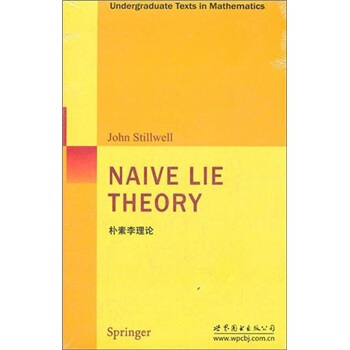

![植物係統學(全彩色)(原著第2版)(導讀版) [Plant Systematics(Second Edition)] pdf epub mobi 電子書 下載](https://pic.tinynews.org/10944499/1044fb45-377c-4927-8632-1bf06b268abc.jpg)
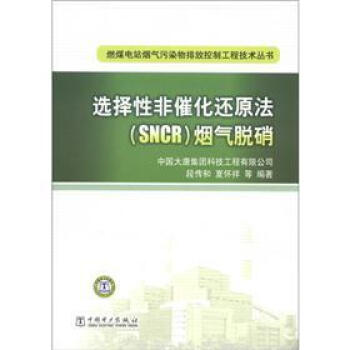

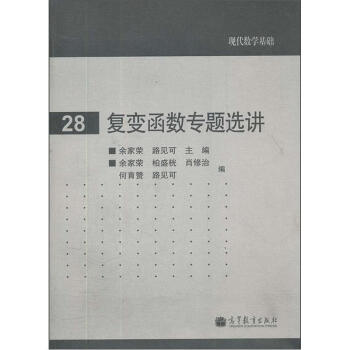
![中國區域海洋學:物理海洋學 [Regional Oceanography of China Seas:Physical Oceanography] pdf epub mobi 電子書 下載](https://pic.tinynews.org/11037140/rBEDilADv7EIAAAAAADGryrRoHcAAEBvwPih4oAAMbH396.jpg)
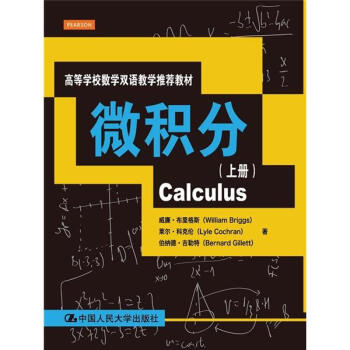

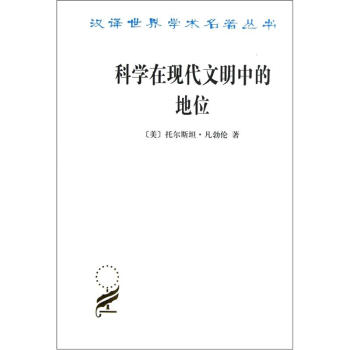




![光子晶體的光學性質(第2版) [Optical Properties of Photonic Crytals] pdf epub mobi 電子書 下載](https://pic.tinynews.org/11321054/rBEhVVI4VD0IAAAAAALtwBe5EZYAADTRgLRrA8AAu3Y764.jpg)




